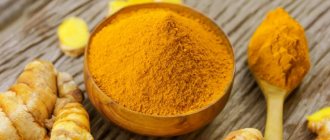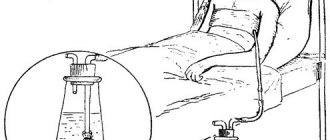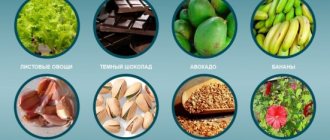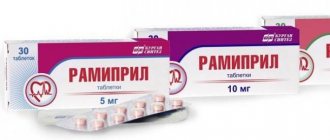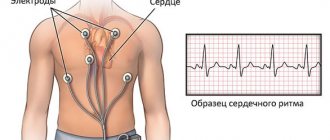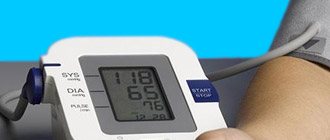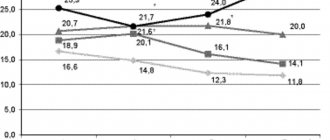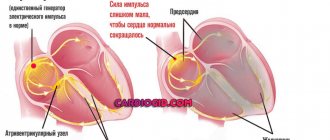The diagnosis of low heart pressure, or hypotension, is made when the blood pressure monitor reading is below 90/60. There are many reasons why indicators can fall (medication, shock, chemotherapy). But in most cases, the pressure can easily be raised without consulting a doctor, so isolated cases of hypotension are not even considered grounds for issuing a sick leave. But cases of sudden and sharp drop in heart pressure can be directly related to serious illnesses. Therefore, it is very important to understand when low blood pressure can be treated at home, and when it is necessary to urgently call an ambulance.
What to take
If the doctor has determined for sure that a person has hypotension, then he prescribes a number of medications. The treatment complex includes the following means:
- When a patient with hypotension experiences fainting, frequent dizziness, and vision deterioration, the doctor prescribes Fludrocortisone. The medicine relieves symptoms well and improves general condition.
- For severe deviations in vascular tone, the drug Deoxycorticosterone helps.
- Epinephrine tablets quickly increase the diastolic reading due to active vasoconstriction.
- Heptamil tablets effectively combat arterial hypotension. This drug is harmless; it has a positive effect on the functioning of the heart and blood vessels.
- The drug Dopamine (drops, intravenous injections) tones blood vessels located on the periphery.
The first signs of the condition
A decrease in the lower value of blood pressure is accompanied by a decrease in blood circulation, which leads to a deficiency in the supply of nutrients and oxygen to organs and tissues. Redox reactions in the body slow down, making it difficult to remove carbon dioxide and decay products, causing the death of cellular structures.
Low heart pressure causes severe headaches localized in the frontal lobes with irradiation to the temporal zone
With a short-term imbalance between indicators, there may be no symptoms. Long-term disorder can be diagnosed by the following signs:
- Headache, which is accompanied by attacks of dizziness, loss of coordination and orientation in space.
- Visual impairment in the form of darkening in the eyes, flickering “spots”.
- Severe weakness leads to rapid fatigue and decreased performance.
- Instability of the emotional sphere causes a constant feeling of anxiety and restlessness.
- Pain and tightness in the chest area.
- Increased sweating, cold extremities.
A characteristic symptom of the condition is orthostatic hypotension, in which a sudden change in body position in space causes severe dizziness with further loss of consciousness.
No ads 3
Causes
The main provoking factor for a drop in the indicator is a weakening of vascular tone. Through veins that have lost elasticity, blood moves much more slowly, and this leads to a deficiency of oxygen in all organs. As a result, many serious diseases develop. Other reasons:
- poor heart function, thyroid disease;
- large loss of blood due to injury;
- dehydration, excessive exercise and abuse of diuretics;
- may be caused by disruptions in the gastrointestinal tract;
- hormonal imbalance, menopause;
- anemia, adrenal gland diseases;
- the indicator may fall due to the development of oncology;
- Hypotension is also often observed in pregnant women;
- acute infectious ailments.
Decreased diastolic pressure with normal systolic
There are many reasons that influence the difference between the upper and lower pressure numbers. One of them is low vascular resistance, often observed in older people. This is explained by the fact that as the body ages, the walls of the large arteries and aorta narrow and thicken. In this case, the diastolic pressure drops significantly, while the upper pressure remains normal or rises very slightly.
Hypotension and low pulse
If the frequency of movement of the arterial walls decreases, this is due to a decrease in heart contractions. Main reasons:
- excessive use of medications without doctor's prescription;
- injury to the neck, sternum;
- severe hypothermia;
- severe forms of infection or inflammation in the body;
- serious intoxication with nicotine and chemical substances.
Arterial hypotension and high pulse
Often, the deviation appears due to vegetative-vascular dystonia, which progresses according to the mixed or hypotonic type, or is provoked by the following conditions:
- pregnancy;
- loss of copious amounts of blood;
- some types of medications;
- alcohol and drug intoxication;
- state of shock (traumatic, anaphylactic, cardiogenic, toxic shock);
- respiratory, renal failure;
- diseases of the nervous, endocrine, cardiovascular systems;
- severe forms of infectious diseases.
Causes of low blood pressure
Physiological factors
Some people have blood pressure readings within 90/60 mmHg. Art. are a variant of the norm. In this case, well-being and performance are not impaired, but when staying in stuffy rooms, a feeling of lightheadedness and weakness is typical. More often, constitutional hypotension occurs in young girls and people of asthenic physique. There are several other options for physiological low blood pressure:
- Orthostatic
. Occurs when there is a sharp transition from a horizontal to a vertical position. Manifested by darkening of the eyes, weakness, dizziness. - Compensatory
. It is observed in residents of high mountain regions, all functional systems of the body have adapted to low oxygen tension. - Postprandial
. It develops 10-20 minutes after eating, mainly when consuming large amounts of carbohydrate foods.
In athletes, a combination of low blood pressure and bradycardia is possible. The condition is caused by the body getting used to constant overload. Hypotension occurs in weather-dependent people with increased air humidity, sudden weather changes, and time zone changes. A short-term drop in pressure occurs in response to exposure to electromagnetic fields and radiation.
Pregnancy
25% of pregnant women have low blood pressure in the early stages. The condition is a consequence of a sharp change in hormonal levels. Usually the problem is aggravated by toxicosis, which is caused by chronic loss of fluid and electrolytes through vomiting. Another typical cause of low blood pressure during gestation is iron deficiency anemia, which is diagnosed in 40-45% of pregnant women.
Protein-energy malnutrition
Following strict diets is the most common cause of low blood pressure in young women. The symptom is associated with a lack of essential nutrients, vitamins, and iron. The clinic appears gradually. Worried about weakness, decreased ability to work. When walking fast or climbing stairs, shortness of breath is observed. It becomes difficult to get up in the morning: you feel dizzy, weak in the legs, and muscle tremors.
Cardiopsychoneurosis
Dysfunction of nervous regulation often leads to a decrease in blood pressure. This reason is more typical for young, emotionally labile patients. Women are more often affected. For low blood pressure in such cases, severe weakness, darkening of the eyes, pressing headache, and pale skin are typical. Symptoms are provoked by prolonged standing, lack of oxygen, and stressful situations.
Anemia
Low blood pressure is one of the main symptoms of anemia. The clinical picture is standard - weakness, dizziness, intolerance to stuffiness. With anemia, a decrease in pressure is accompanied by severe pallor, which persists constantly, and not only when the condition worsens. Taking into account the reason for the decrease in hemoglobin, additional signs are possible: brittle hair and nails, “lacquered tongue,” paresthesia.
Hormonal diseases
Signs of persistently low blood pressure are a specific symptom of hypothyroidism. Such patients freeze even in warm rooms, feel drowsiness and weakness. A decrease in pressure is manifested by headaches and dizziness. If the problem persists for a long time, memory and mental performance deteriorate. Chronic decrease in blood pressure occurs in patients with adrenal insufficiency (Addison's disease).
Organic lesions of the central nervous system
Hypotension develops as a reaction to a violation of the mechanisms of regulation of cardiovascular activity. It is observed with concussions and bruises of the brain, degenerative processes affecting the gray matter. These conditions are characterized by persistently low blood pressure, which cannot be normalized by standard treatment measures.
Acute conditions
Low blood pressure is a symptom of many emergency situations involving shock. A sharp drop in blood pressure is manifested by severe dizziness, lightheadedness, chills and drowsiness. Shock often ends in fainting. The skin becomes pale and covered in cold sweat. Signs of low blood pressure are characteristic of several groups of conditions:
- Hypovolemic conditions
: dehydration, massive bleeding, extensive burns. - Circulatory shock
: anaphylactic, infectious-toxic. - Cardiac pathologies
: acute heart failure, life-threatening arrhythmias, myocardial infarction.
Complications of pharmacotherapy
Overdose of antihypertensive drugs is a common cause of pathologically low blood pressure in the treatment of hypertension. The symptom is more often observed when taking diuretics, nitrates, and beta blockers. The peculiarity is that unpleasant sensations in such patients can appear with normal tonometer readings - systolic pressure at the level of 100-120 mm Hg. Art. This is due to the restructuring of all body systems, adaptation to arterial hypertension.
Rare causes
- Vascular diseases
: pulmonary embolism, dissecting aortic aneurysm. - Congenital and acquired heart defects
. - Damage to the digestive system
: peptic ulcer, pancreatitis, hepatitis and cirrhosis of the liver. - Intoxication
: plant poisons, heavy metal salts, toxic chemicals.
How to increase diastolic pressure
There are many effective ways that stabilize the diastolic indicator:
- Special breathing exercises. You need to take a deep breath, hold your breath a little and exhale forcefully through your nose. It is recommended to perform such manipulations up to 10-15 times a day.
- Self-massage of the cervical vertebrae, gentle gentle bends to the sides.
- A diet that includes foods with folic and pantothenic acid, iron, citrus oils:
- meat, liver;
- legumes;
- Rye bread;
- nuts;
- broccoli, celery, boiled potatoes;
- sauerkraut;
- bitter dark chocolate;
- fresh fruit and vegetable juices;
- spices (cinnamon, curry, ginger).
How to raise heart pressure without raising blood pressure
Sometimes it happens that the lower indicator may decrease, but the upper one remains normal. If there is a big difference between the values, then you should urgently contact a specialist who will prescribe individual therapy. When the gap is small, you can stabilize the indicator yourself. Taking herbal tinctures and doing gymnastics will help. Even with hypotension, a contrast shower, massage, and giving up bad habits help a lot.
Very low pressure value
When a person has a significant deviation, urgent measures will be needed. If the patient is in critical condition, he has another attack of chronic arterial hypertension, then you should immediately call an ambulance. You can do the following on your own:
- Why is low blood pressure dangerous?
- Measure diastolic pressure with a tonometer (check to see if this indicator continues to drop).
- Perform acupressure on the back of the head and upper shoulder girdle.
- You can take ascorbic acid, which is considered the most harmless means for lowering blood pressure.
What symptoms indicate hypotension?
In fact, having low blood pressure is much better than high blood pressure. Doctors believe that patients with an average blood pressure of 90/60 live much longer than those who suffer from hypertension.
But when the blood pressure monitor drops below 90/60, the following symptoms occur:
- dizziness, which in severe cases can develop into delirium;
- pale skin covered with sticky sweat;
- nausea;
- deterioration in vision clarity;
- dull and rare heartbeat;
- fainting.
If the tonometer shows 90/60 or lower, then a diagnosis of hypotension is made.
Episodes of hypotension in young, healthy people are usually asymptomatic. But low blood pressure in older people can provoke very unpleasant consequences, including falling into a coma and death. Therefore, at the first manifestation of the above symptoms, you need to lie down and, if possible, raise your legs above body level (for example, throw them on a pillow). This should help relieve mild symptoms within a few minutes.
Features of treatment at home
Doctors consider the main way to correct hypotension to be the correct daily routine, a balanced diet, physical activity, and everything that is commonly called a healthy lifestyle. Let's figure out how to quickly raise low heart pressure and what medications are used at home. Dietary supplements, adaptogens, herbs in this case play a supporting role.
Medications
We offer you the top nine medications that increase cardiac (systolic or upper) blood pressure:
| Drug name | Blood Pressure Promoting Properties |
| Caffeine-containing: Acepar, Citramon, Pentalgin-N | Tones blood vessels, increasing blood pressure |
| Psychotonics: Sydnofen, Mesocarb, Mexidol, Sydnocarb | Activate the adrenergic system |
| Analeptics: Cordiamine, Centedrine | Stimulates the vascular center |
| Adrenergic agonists: Gutron, Regulton, Fetanol, Mezaton | Stimulate adrenergic receptors, narrowing arteries, reducing blood flow |
| Spinal cord stimulants: Securinine, Strychnine | Affect the centers that control the lumen of the arteries |
| M-anticholinergics: Bellaspon, Belloid | Block the interaction of cholinergic receptors with acetylcholine |
| Nootropics: Piracetam, Pantogam | Improves metabolism in the central nervous system and regional blood circulation |
| Energizers: Potassium orotate. L-carnitine, Lipocerebrin | Reanimate cells, activate redox processes |
| Vitamins: C, A, group B, Pikovit, Alphabet, Vitrum, Complivit | Improves metabolic processes, exhibits antioxidant effects |
When should you increase your blood pressure and in what ways?
Reduced blood pressure is one of the variants of the individual characteristics of the body. Hypotonics make up more than 15% of the healthy population. Low indicators without subjective complaints and signs of violations do not require correction.
The effective pressure that ensures normal kidney function is 70 mmHg. Art., a more pronounced decrease in indicators leads to violations.
Most people answer the question: “How to increase heart pressure?” They will answer: “Caffeine,” which belongs to the group of stimulants of the central nervous system. The substance blocks adenosine receptors in neurons, which leads to increased secretion of acetylcholine (AC), norepinephrine, dopamine, serotonin and psychostimulating acids.
High caffeine foods:
- dark chocolate (from cocoa beans);
- natural brewed coffee;
- green tea;
- "Coca Cola";
- cocoa.
For patients who experience headaches, discomfort behind the sternum, or during attacks of hypotension, it is recommended to increase the values to “working” values (different for each person). In practice, non-drug and pharmaceutical methods are used.
Ways to raise blood pressure:
- Contrasting foot baths. Use two bowls of water (one at room temperature, the other cold). Hold your feet in each position for 20-25 seconds, repeat 5-10 times.
- Contrast shower - a sharp change in water temperature (frequency and duration of the “approach” as with baths). It is recommended to complete the procedures with cold water.
- Physical activity according to a person’s capabilities: gymnastics, running.
- Food: strong green or black tea, natural coffee.
In addition, safe folk remedies for increasing blood pressure during situational (episodic hypotension) include:
- ginseng root;
- Eleutherococcus root;
- lemongrass fruit;
- rhodiola;
- lure;
- Aralia;
- saparal;
- pantocrine;
- rantarine.
These substances of natural origin tone the nervous system and increase blood pressure, helping to adapt to the environment. They are used as adaptogens for general malaise, stress, anxiety, overexertion and past illnesses. Used in the form of alcoholic extracts and tinctures.
These methods are recommended in the initial stage of therapy to protect the patient from the side effects of medications.
What does a low diastolic reading mean?
After a series of studies, doctors found that the nature of the pathology in different people can differ significantly. There are three types of deviations that help to understand what problems are in the body's functioning. Types of arterial hypotension:
- Orthostatic. This type of pathology may mean that the human body cannot quickly and correctly regulate indicators. This disease is characterized by a sharp drop in blood pressure (blood pressure) downwards after a change in position. At the same time, the head may become dizzy, and in some cases the person loses consciousness. The main reasons: pregnancy, dehydration, use of certain groups of medications.
- Postprandial hypotension. The main symptoms are a sudden rush of blood to the lower extremities after eating. This type of malaise indicates disturbances in the functioning of the endocrine system, mental disorders (neurasthenia, neurosis, etc.), organic changes in the brain (Alzheimer’s disease may threaten).
- Vegetative-vascular. This diagnosis means that the cardiovascular system is developing or functioning incorrectly. Often diagnosed in teenagers.
Provoking factors
Even a slight decrease in pressure 120 to 55 can be caused by many provoking factors, including:
- Hormonal imbalance. Changes in hormonal levels can cause the lower value to decrease, especially in adolescents during puberty and in women during pregnancy.
- Chronic fatigue syndrome. Diagnosed in individuals prone to hypotension.
- Long-term diets, fasting. A monotonous diet with a minimum amount of vitamins and microelements affects the functioning of internal organs.
- Sleep disorder. Sleeping less than 8 hours provokes a decrease in diastolic readings.
- Oncological diseases. Malignant tumors are the main provocateurs of hypotension.

